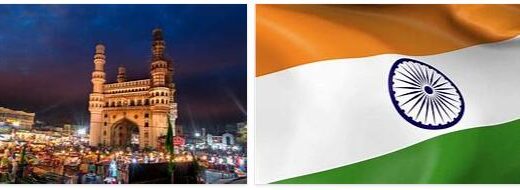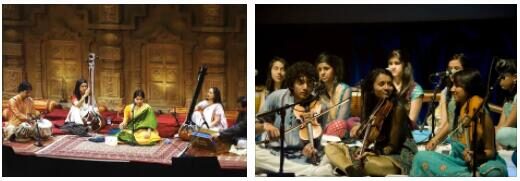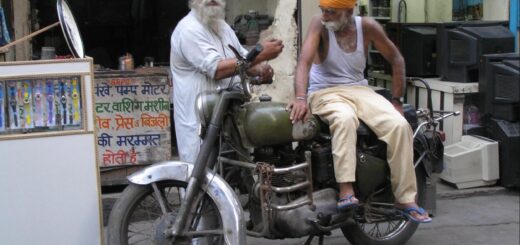India Arts
ANCIENT INDIA BEFORE THE GUPTA
Still obscure, from an artistic point of view, is the period between the end of the Indus civilization and the beginning of the Maurya dynasty (late 4th-early 2nd century BC), under which the official art and monumental. In the architectural field, the most ancient pre-Maurya structures seem to be represented by the stone walls of Rajgir (Rājagṛha, the ancient capital of Magadha, today’s Bihar) and by what remains of the wooden and clay walls of the subsequent capital, Pāṭaliputra (today’s Patna, Bihar), which under the Maurya received a Persian imprint, as is evident from the “audience hall” (pillared and supported by 84 polite monolithic columns on wooden bases, once covered by beams lignee), built on the model of an apadāna. Unfortunately nothing there remained architecture, probably almost entirely wooden, affirmed in the period Maurya, and of which you can get an idea from the rear of the reliefs Stupa of Bharhut (Eastern Madhya Pradesh; 100 BC): these are two or three storey buildings, often enclosed by a balustrade, with carinated arched portals, loggias and balconies and a pavilion roof. The isolated “columns of Indra” date back to the Maurya era, symbolizing Indra’s liberation of the waters and, at the same time, the universal ruler, axis and guarantor of the cosmic and ethical-social order. Others of these later pillar-columns perhaps symbolize the Buddha. The inscriptions and the numerous stūpas traditionally attributed to him testify to the support given by Aśoka to Buddhism, which coexisted alongside other religions, as evidenced by the caves built for the Ājīvīka sect in Barābar (Bihar). It is starting from the sec. II-I a. C., in the so-called Śuṅga epochs (in the North) and Sātavāhana (in the South), which is witnessing the full formulation of Buddhist art, even if the stūpa n. 2 by Sanchi presents a decoration with not necessarily Buddhist themes. It is on the Stupa of Bharhut (100 a. C.), of which remain part of the balustrade and portals, which, for the first time Indian art, depicts episodes from the life of the historical Buddha and his previous incarnations (Jātaka); the reliefs of Bhārhut, fundamental for the reconstruction of the daily life of ancient India, from the stylistic point of view show the essential characteristics of Indian sculpture that will last until the Gupta eraand who see the figures squeezed between two parallel planes. A little later than Sanchi n. 2 and in Bharhut are the stūpas of Amaravati, in the oldest decoration, and of Pauni (Maharashtra). The most famous Buddhist monument is perhaps the stūpa n. 1 by Sanchi, on whose reliefs the figures acquire a certain thickness while remaining extraneous to any form of naturalism. To the period from the end of the century. II to the middle of the century. I a. C. date back to the oldest caitya and vihāra, of Maharashtra, important for the “negative” reconstruction of the buildings on a natural scale: Bhaja (vihāra n. 19), Pitalkhora, Bedsā. The most famous of the Nānaghāt caves, the n. 11, with a non-religious meaning, with images of the first rulers of the dynasty. Also in Maharashtra, and in the Buddhist field, it is now established that in the mid-century I d. C. dates back to the oldest part of the cave of Kārlī, while the period between the century. II a. C. and the sec. I d. C. remount the oldest Ajanta caves. Later in time, those of Nāsik (II-III century AD) are to be placed. Around the second half of the century. I a. C. the first anthropomorphic images of the Buddha arise, hitherto represented aniconically, in the Gandhāra and in Mathura. Starting from the sec. I-II d. C., alongside those of the Buddha, we find the first images of Bodhisattva, in conjunction with the affirmation of the Mahāyāna. There are three schools that emerge in this period: under the Kuṣāṇa dynasty, those of Gandhāra and Mathura. The third, which flourished under the Sātavāhana, is known as the Amaravati School; characterized by various phases, it has its natural outlet in the production of Nāgārjunakonda, under the Ikṣvāku, and lasts until the century. IV, beyond the chronological limits of the Sātavāhana. In this school, from a stylistic point of view, the characteristic linearity of the first phase is replaced by an increasing depth and plasticity, which is replaced by the progressive flattening of the figures, which get longer and longer, losing all naturalness and transforming the composition into a knot of concentric lines. These characteristics are accentuated in the last phase, with the further thinning of the figures, now with extremely elongated lower limbs and an almost “spider-like” appearance.
THE EUROPEAN INFLUENCE
According to Petwithsupplies, the centuries-old domination of Muslim art was followed by the influence of European art in India, which had already crept into the sec. XVI-XVII through the presence of Western works at the Mughal court. This influence became more pressing through direct contact with Europeans, who spread forms of Portuguese Baroque and English Neo-Gothic architecture in India, as well as the decorative taste of French styles. In turn, Europeans were interested and influenced by indigenous art, whose production, however, had expired in terms of craftsmanship. Towards the end of the nineteenth century, through various initiatives, India became aware of the dangerous impoverishment of national culture and began the work of protecting and revaluing its own traditions.



